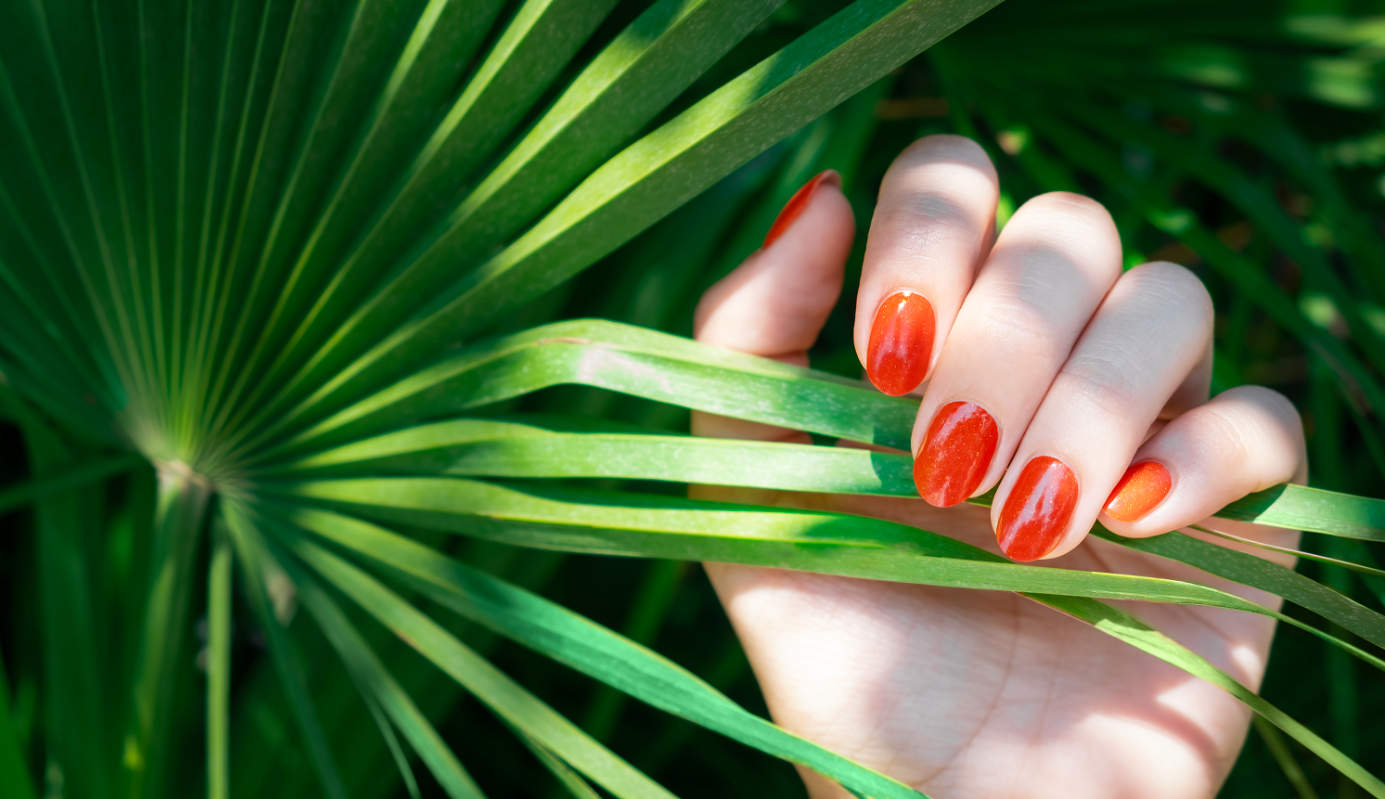Nourish and strengthen nails naturally
What are our nails hiding? What are they made from? Which nutrients do they need to be strong, beautiful and not striated? Under the surface the physiology of our nails is more complicated than it appears.

What are our nails hiding? What are they made from? Which nutrients do they need to be strong, beautiful and not striated? Under the surface the physiology of our nails is more complicated than it appears.
Keratin is an essential protein for the skin, nails and hair. Synthesised by keratinocytes, this molecule gives strength and suppleness to the skin, but also enables it to remain in a constant process of renewal.
Keratinisation (the production of keratin) takes place in the nail matrix, a structure that is an extension of the epidermis. It harbours a germinative layer of keratinocytes which divide and accumulate keratin fibres, causing the nail to grow permanently. The matrix can be seen at the base of the nail, under the nail plate, in the shape of a white half-moon (the lunula) made up of soft cells in the process of keratinisation.
The nail does not grow at the tip, but at the base, in the matrix. When this is damaged, the nail grows irregularly or becomes deformed. The nail plate is made up of cells stacked one on top of the other, rich in hardening keratin fibres.
Nail growth is definitely continuous but slow (on average 3mm per month for fingernails). Toenails take their time; only renewing every 12 to 18 months compared with fingernails which take just 6 to 9 months.
Their structure evolves over time, while children have shiny, smooth nails that are fairly flexible but resistant, older people generally have more fragile nails that are discoloured and dull, with hardened cuticles.
Season changes, stress, the post-pregnancy period and temporary fatigue can all influence nail vitality.
As well as keratin, skin and other cells are hard hit by deficiencies in essential nutrients such as magnesium, calcium, iron, zinc, sodium and copper. The sulphur-containing amino acids cysteine and methionine are essential for keratin synthesis. Nutritional imbalance can affect the nail as much as bad nail polish! There’s no point in increasing the number of treatments if the diet is devoid of fresh fruit and vegetables, wholegrain cereals and small oily fish, which provide vitamins, trace elements, fatty acids, etc.
How can you tell if your fingertips are affected by a nutritional imbalance? Skin signs include ridged, brittle nails with dry or even painful cuticles.
In addition to a balanced diet, other nutritional components can be added specifically:
Basic nail care is extremely simple and often requires only simple cleansing and nourishing products.
The first step is to regularly nourish the nails with a protective moisturising cream. Wash your hands using a mild soap and a soft nailbrush for cleaning your nails.
Nothing could be easier! You need:
Soak your fingers for 5 minutes in the soapy, lemony water to soften the cuticles. Once your hands are dry, gently push the cuticles back using the wooden cuticle stick on the edge of the nail. File your nails in one stroke and in one direction (from left to right or right to left). You can delicately polish/buff your nails to make them shine. Moisturise your hands and nails using vegetable oil or handcream.
Dietary supplements for hair and nails are another way to take care of your nails. They principally provide the essential amino acids for nourishing your hair and nails, giving them strength and resistance. There are also vitamins, specifically B8 (biotin), reputed to improve the structure of brittle nails, and trace elements, some of which can protect nails from deterioration.